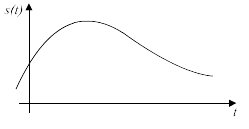Pingala's binary system is what bases the digital data. The two numbers that code all digital data are numbers 0 and 1.
Bit-noun: a unit of measurement of information (from Binary + digIT); the amount of information in a system having two equiprobable states.(http://www.onelook.com/?w=bit&ls=a)
Byte-noun: a sequence of 8 bits (enough to represent one character of alphanumeric data) processed as a single unit of information(http://www.onelook.com/?w=byte&ls=a)
Byte-noun: a sequence of 8 bits (enough to represent one character of alphanumeric data) processed as a single unit of information(http://www.onelook.com/?w=byte&ls=a)
Sampling rate finds the number of samples per second taken from a continuous signal. An image of sampling rate is:


Colour Depth describes the number of bites used to represent a colour. It effects the apperance of an image, the higher the colour depth the broder range of distinct colour. Here are a few pictures showing the difference in an image when the bits are different:
This image shows an image with 1 bit.

This image shows 4 bits.

You can clearly see that the more bits an image has the clearer it is.The higher the bit number the brighter the colour map but the clolurs may be limited.Bits also help the clearness and the texture of an image.
Sampling rate only effects video as it is simply the number of samples of the audio signal taken per seconds, this means that it can only pick up sounds or audio signal sent by a video but not still media as there is no sound but just an image. Colour depth shows both images and videos as it is only the amount of bits in a colour,the higher the bit the stronger and brighter an image.

No comments:
Post a Comment